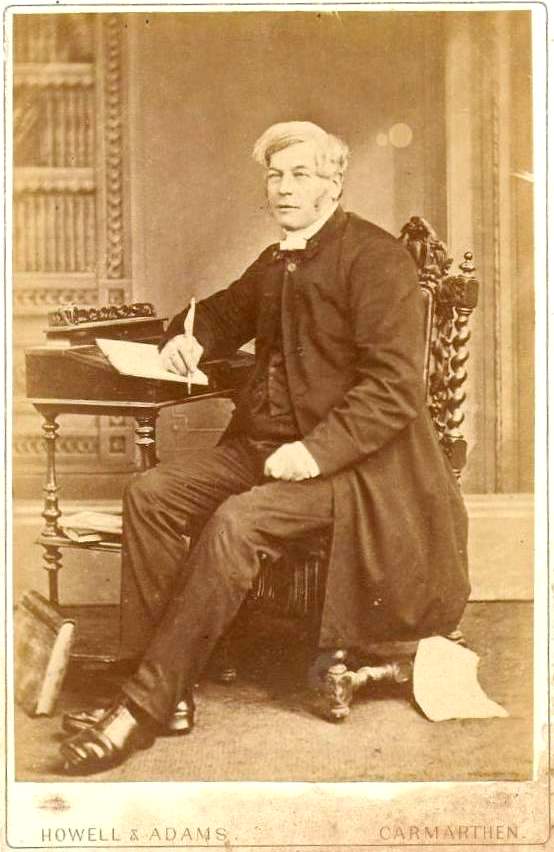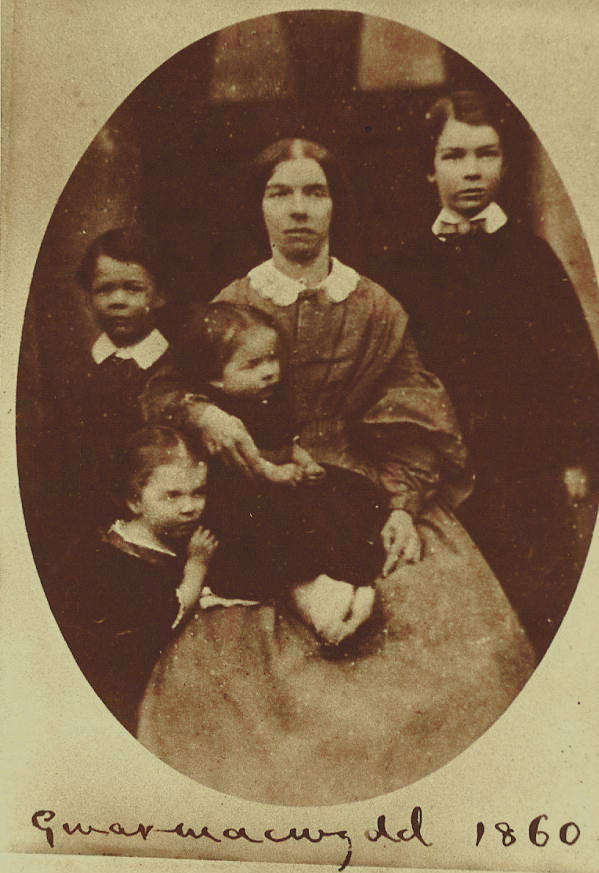RBJ & The History of Gwarmacwydd
There has been a farmstead here since 1785.
Originally a very small property, named Dŵrdy or Madŵrdy.
1841
Richard Bowen Jones (RBJ) Became Rector of Cillymaenllwydd with Castell Dwyran in 1841 and shortly after purchased the property.
He secured permission from the bishop of St David’s to build a “small” residence.
Richard Bowen Jones (RBJ)
1811 -1887

Whats in a Name – Gwarmacwydd
RBJ created the name Gwarmacwydd. We don’t know what it means, but members of his family suppose that because his grandfather Edward Jones Bowen came from Wernmacwydd also known as Gwernmacwy, which goes back to the 16th century, he chose to name his own house as Gwarmacwydd to avoid confusion, but still show a connection with his ancient welsh family home.
The Rector’s Country Seat
RBJ had visions of Gwarmacwydd as a small country estate, he planted trees and landscaped the gardens, and the fields from the house looking toward the river Tâf.
He also constructed the ponds to the front of the house, which were not just ornamental, but farmed fish, trout and carp, for the table.
Gwarmacwydd &The Great
Eastern
According to local legend RBJ bought Teak from the ship – Great Easter, for the front door and internal doors, as well as the windows and shutters for the house. This is plausible because the ship was berthed in Neyland at least twice for repairs and refurbishment between 1860 and 1861, also RBJ’s wife Clarissa Gibbs Garrett was from a wealthy & connected shipping family.
Who Built the Cottages
We are fairly certain that RBJ constructed the outbuildings, now the Barn & Tower cottage and the Mill & Old Dairy. The stone is dressed Pembrokeshire limestone, and the work is of a good standard.
RBJ remodeled the original 1785 dwelling as servants’ quarters and a coach house, now The Old Coach house and The Butlers cottages. They are attached to the main house, almost, but not quite, at a right angle as clearly the rector wanted his new house to be orientated as a traditional church.
By all accounts RBJ was well educated, respected, and widely connected, yet formidable man.
He was classically educated and had a MA (hons) from Jesus College Oxford, and was a local Justice of the Peace, Magistrate and School Governor.
RBJ’s Coffin
According to a local tale RBJ had a coffin made long before his death, which he kept under his bed, regularly lying in it to be sure that he still fitted into it.
When he died on 9th May 1887, aged 75, a notice of his death was printed in the Auckland Star, yet the epitaph, commissioned by his eldest son Vaughn, a Physician, inscribed on his tombstone in Castell Dwyran churchyard reads.
‘Here Lie the Remains of ‘A Classical Ass’
The Accursed of his Sons by the name of ‘Jarass’
In the Earth he is Ammonia and Triphosphate of Calcium
On the Earth a ‘Home Demon’ and a ‘Ferocious Old Ruffian’.
Clarissa Bowen Jones

Taken in front of Gwarmacwydd, this is a photograph of RBJ’s wife Clarissa with her children, she lived to be aged 96 and was buried in Castell Dwyran Church.
Her son Vaughn, commissioned a memorial plaque in Llanboidy church
‘She was a good woman, a dear kind and old mother – a gentlewoman in every sense and meaning of the term’.’
